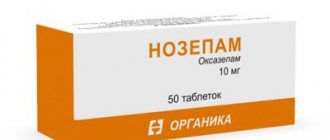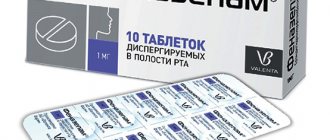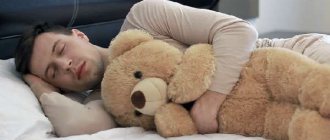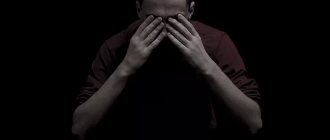Properties
The drug is able to activate benzodiazepine receptors and also have a sedative effect on the subcortical structures that are located in the human brain. In addition, Phenazepam causes the suspension of polysynaptic spinal reflexes.
People often ask: what will happen if you take a Phenazepam tablet? Benzodiazepine has an effect on the amygdala complex of the limbic system, due to which, with regular use, the symptoms that occur against the background of neuropathic diseases are reduced and eliminated, anxiety, anxiety and feelings of fear are noticeably reduced, and the emotional stress associated with mental or nervous pathologies.
The sedative effect of 1 tablet of Phenazepam is due to its effect on the reticular formation and nonspecific thalamic nuclei. It should be borne in mind that the drug is ineffective for affective types of disorders, hallucinations and delusional states.
"Phenazepam" is well and quickly absorbed from the gastrointestinal tract and excreted by the kidneys in the form of metabolites. The maximum concentration is reached two hours after oral administration.
Release forms
The drug is available in the following forms:
- Tablets of 0.5 mg, 1 mg or 2.5 mg. They are flat-cylindrical, with a chamfer, white (0.5 and 2.5 mg) or with a score and a chamfer (1 mg). Blisters contain 25 or 10 tablets of Phenazepam. Packed in 2 or 5 blisters in cardboard boxes. The product is also available for sale in polymer cans (50 Phenazepam tablets each) and cardboard packs (1 can per pack).
- Solution for intramuscular and intravenous administration, packaged in glass ampoules of 1 ml and blisters (5 ampoules each). The ampoules are packed in cardboard boxes (10 ampoules each) or cardboard packs (2 blisters each).
Comparison of ease of use of Melaxen and Phenazepam
This includes dose selection taking into account various conditions and frequency of doses. At the same time, it is important not to forget about the release form of the drug; it is also important to take it into account when making an assessment.
The ease of use of Melaxen is approximately the same as that of Phenazepam. However, they are not convenient enough to use.
The drug ratings were compiled by experienced pharmacists who studied international research. The report is generated automatically.
Last update date: 2019-11-30 11:05:27
Indications and contraindications
The drug must be prescribed by a doctor based on the established diagnosis. According to the instructions for use for Phenazepam tablets, the indications for use are:
- Restless, anxious states, accompanied by unreasonable fears.
- Diseases of a neurotic nature, which are characterized by increased irritability and emotional tension.
- Conditions characterized as psychopathic-like, psychopathic, neurosis-like, etc.
- Hypochondriacal-senestopathic syndrome.
- Prevention for severe emotional stress.
- Reactive psychoses.
- Sleep disorders.
- Epilepsy (as a remedy for seizures).
- For tics, rigidity and muscle hyperkinesis as part of complex therapy along with other drugs.
The drug is contraindicated in the following cases:
- State of shock.
- Hypersensitivity to substances included in the drug.
- Coma.
- Angle-closure glaucoma in the acute phase or with a predisposition to this disease.
- Acute alcohol or drug intoxication.
- Intoxication with sleeping pills, if the vital functions of the body are weakened.
- Depressive state with development of suicidal tendencies.
- Respiratory dysfunction.
- The period of pregnancy and breastfeeding.
The safety and effectiveness of Phenazepam tablets when used by persons under 18 years of age have not been determined, so they should not be used in patients in this age group.
The drug must be taken exclusively under the supervision of the attending physician.
It is prescribed with caution for the following conditions:
- Drug addiction.
- Disturbances in the functioning of the brain of an organic nature.
- Apnea.
- State of psychosis.
- Cerebral or spinal forms of ataxia.
- Kidney and liver failure.
- Elderly age.
As indicated in the instructions for use, Phenazepam tablets during gestation can be prescribed only if it is necessary for the patient’s vital signs. The active component of the drug can have a toxic effect on the developing fetus, increasing the likelihood of developing birth defects. It is especially dangerous to take the drug at the beginning of pregnancy, namely the first 12 weeks.
At later stages, taking Phenazepam may be accompanied by depression of the central nervous system of the fetus. When taking the drug throughout pregnancy, the child may develop dependence on the active substance followed by withdrawal syndrome.
Taking the drug immediately before or during childbirth is strictly prohibited, as this can lead to the following consequences:
- Hypotension.
- Weakened sucking reflex.
- Depressed breathing.
- Decreased muscle tone.
- Hypothermia.
And again about the shortcomings
The effect of the drug on the body is very ambiguous; it has a considerable list of both contraindications and side effects.
In addition to traditional hypersensitivity, pregnancy, breastfeeding, adolescence and childhood, there are also specific contraindications.
Medicines should not be used in a state of shock or coma, severe depression (when suicidal tendencies occur), angle-closure glaucoma, myasthenia gravis, severe chronic obstructive pulmonary disease, and severe alcohol or sleeping pill poisoning.
Among the side effects, first let’s say a few words about the effect on the central and peripheral nervous system. At the beginning of drug therapy, drowsiness is observed, especially in elderly people. In addition, during the same period, ataxia, a feeling of fatigue, dizziness, confusion, gait instability, slowed mental and motor reactions, disorientation, and decreased ability to concentrate develop.
Very rarely there are reactions that contradict the effect that the drug should have. We are talking about the development of fear, anxiety, muscle spasms after using the medicine.
Combination with alcohol
It is strictly forbidden to simultaneously take Phenozepam tablets with alcoholic beverages. The period of withdrawal syndrome is also a contraindication for taking the drug, since alcohol may remain in the body, which can react with the active substance.
Side effects are significantly increased when taking the drug simultaneously with alcohol. Moreover, the reaction is individual for each individual patient. Symptoms when taken simultaneously with alcohol are as follows:
- Lethargy.
- Hallucinations.
- Nausea and vomiting.
- Dyspnea.
- Reduced hemoglobin level.
- Psychomotor dysfunction.
- Dizziness.
In some cases, shortness of breath can be so severe that it can cause coma and death.
Some people take Phenazepam tablets and alcohol at the same time to enhance the effect of intoxication. Such actions often cause addiction in a person, which subsequently ends in an overdose.
"Melaxen"
Melaxen is a synthetic analogue of the natural hormone melatonin, which is responsible for the sleep-wake cycle in the human body. The drug is designed exclusively to restore circadian rhythms, which are usually disrupted due to flights, business trips, and time zone changes. "Melaxen" contains 3 mg of the active substance melatonin and has a strong adaptive effect, while it can be considered a sleep aid very conditionally.
This is what the packaging with the drug looks like.
The drug is recommended for patients over 55 years of age suffering from primary insomnia. It has a mild sedative effect, a positive effect on brain functions responsible for the psyche, normalizes sleep, and has immunostimulating and antioxidant effects. The effectiveness of the medicine depends on the time of administration. It is recommended to take it 30-40 minutes before bedtime. And if you have a flight with a change in time zones, start taking pills 2 days before the event.
A few facts about Melaxen
- Has a gentle effect on falling asleep.
- Sold without a prescription.
- Has virtually no side effects.
- Recommended for older people.
- It normalizes sleep well, especially with primary insomnia.
- Not addictive.
- Does not impair memory.
- Does not cause drowsiness during the day.
- Does not aggravate obstructive sleep apnea syndrome.
Instructions
The drug is taken orally, washed down with plenty of water. A single dose of the drug is from 0.5 to 1 mg. On average, you can take up to 5 mg per day. Typically, the minimum dose is taken in the morning and up to 2.5 mg at bedtime. The maximum daily dosage of the drug is 10 mg.
The dosage of Phenazepam tablets must be strictly observed.
Psychopathic, psychopathic and neurosis-like conditions suggest taking 1 mg of the drug 2-3 times a day with a further increase in dosage to 6 mg. If the patient is diagnosed with a sleep disorder, take 0.25-0.5 mg half an hour before going to bed.
Treatment of epilepsy requires taking from 2 to 10 mg per day. With increased muscle tone, 2-3 mg of the drug is prescribed. For anxiety, fears and agitation at the initial level, 3 mg of Phenazepam per day is prescribed. In the future, this dose is increased gradually until the effect of treatment is achieved.
Against the background of alcohol withdrawal, the drug is prescribed with caution, and the dose of Phenazepam tablets is up to 5 mg. The drug can be administered intramuscularly or intravenously as a solution. The dosage is the same as in the case of the tablet form of the drug. Having achieved the effect of therapy, the doctor can transfer the patient to the drug in tablet form, canceling the injections.
Since the medication can cause addiction, it is not recommended to take it in courses exceeding two weeks. However, in some cases, treatment can be prolonged up to two months. You should stop taking it gradually, reducing the dosage to a minimum. This will help avoid drug withdrawal syndrome.
Comparison of the effectiveness of Melaxen and Phenazepam
The effectiveness of Melaxen is quite similar to Phenazepam - this means that the ability of the drug substance to provide the maximum possible effect is similar.
For example, if the therapeutic effect of Melaxen is more pronounced, then using Phenazepam even in large doses will not achieve this effect.
Also, the speed of therapy - an indicator of the speed of therapeutic action - is approximately the same for Melaxen and Phenazepam. And bioavailability, that is, the amount of a drug reaching its site of action in the body, is similar. The higher the bioavailability, the less it will be lost during absorption and use by the body.
Overdose
Excessively exceeding the doses prescribed by the doctor can lead to an overdose. An independent increase in dosage can cause the development of the following conditions:
- Depression of consciousness.
- Drowsiness.
- Depressed breathing.
- Tremor of the limbs.
- Reduced blood pressure.
- Depression of the cardiovascular system.
- Dyspnea.
- Confused consciousness.
- Coma.
- Diarthria.
- Decreased reflexes.
Treatment for overdose is symptomatic. First, the patient’s stomach is washed, then sorbents are prescribed. The patient must be under the supervision of a physician. Hemodialysis in this case does not show effectiveness. In the hospital, the patient is also prescribed Flumazenil as an antagonist. Thus, an overdose of the drug is very dangerous for the health and even the life of the patient, therefore it is strictly forbidden to exceed the prescribed dosage. The lethal dose of Phenazepam in tablets will be indicated later.
Addiction treatment
Treatment for benzodiazepine addiction follows standard regimens. However, the approach to patients is always individual - each clinical case has its own characteristics. Treatment begins with the safe removal of all psychotropic substances, supporting the person until complete resocialization.
Detoxification
The largest number of hospitalizations occur in cases of phenazepam poisoning. Addicts also seek help during withdrawal periods. Detoxification is carried out using the following methods:
- Gastric and intestinal lavage followed by administration of sorbents.
- Controlled administration of a benzodiazepine receptor antagonist, Flumazenil.
- Droppers with antitoxic solutions, glucose, electrolytes.
- Cardiotonic drugs to support cardiac activity.
- Oxygen therapy.
- Symptomatic treatment.
The effectiveness of extracorporeal blood purification (hemodialysis) has not yet been proven. In the hospital, all manifestations of “withdrawal” are painlessly relieved.
Patients with mild illness can receive care at home (anonymously), but further treatment is still required.
Rehabilitation and resocialization
After restoration of the impaired functions of internal organs, treatment is started aimed at preventing relapses. It includes individually selected psychotherapeutic techniques. With the help of a doctor, a person finds the origins of his addiction, normalizes his emotional background, and learns to deal with life’s failures.
An important part of rehabilitation is helping codependent family members. Often relatives suffer no less than the patient, which negatively affects their health. The psychotherapist helps restore normal relationships between loved ones, which increases the patient’s chances of a successful outcome.
After treatment, it is difficult for patients to return back to a society that rejects drug addicts in every possible way. Regular consultations with a doctor help solve current problems without causing a breakdown. If necessary, social services help with studying or getting a job.
Side effects
Incorrectly prescribed therapy or prolonged use of the drug can lead to the development of undesirable reactions from various organs and systems. The manifestation of the following symptoms indicates the need to discontinue the drug and contact a specialist:
- Nervous system: drowsiness, disorientation, fatigue, ataxia, dizziness, difficulty waking up in the morning, confusion, headaches, incoordination of movements, a feeling of euphoria, decreased concentration, anxiety, epileptic seizures.
- Hematopoietic system: anemia, leukopenia, thrombocytopenia, agranulocytosis.
- Gastrointestinal tract: nausea, heartburn, dry mouth, vomiting, diarrhea or constipation, jaundice, increased salivation, decreased appetite.
- Genitourinary system: decreased libido, urinary incontinence or urinary retention, increased sexual desire, dysmenorrhea, renal failure.
In addition, against the background of individual intolerance to the substances included in the drug, allergic reactions may occur in the form of itching, rashes and urticaria.
Other side effects may include:
- Reduced blood pressure.
- Getting used to the drug.
- Anorexia.
- Arrhythmia and tachycardia.
- Visual impairment.
Abrupt withdrawal of the drug can cause a corresponding syndrome, which is manifested by the following symptoms:
- Depressive state.
- Nervousness.
- Irritability.
- Increased sweating.
- Nausea and vomiting.
- The emergence of suicidal tendencies.
- Photophobia.
- Tachycardia.
- Psychosis.
Is it possible to buy Phenazepam tablets without a prescription? No, they are sold only with a doctor's prescription.
special instructions
There are a number of rules according to which the drug should be taken in combination with other medications:
- The toxic properties of Zidovulin increase when taken simultaneously with Phenazepam.
- The effect of the drug is enhanced when combined with psychotropic or hypnotic substances.
- The risk of side effects increases when Phenazepam is combined with ethanol.
- Antihypertensive drugs enhance their properties when combined with Phenazepam.
- Clozapine may further increase respiratory depression during concomitant use.
The drug is not expensive; its price ranges from 90 to 150 rubles. A prescription for Phenazepam tablets is usually issued by the attending physician.
Special instructions for use include:
- If the patient has a history of kidney or liver failure, it is necessary to regularly monitor the state of enzymes and blood tests during treatment with Phenazepam.
- It is imperative to inform your doctor about any medications, especially antidepressants, taken previously. Such patients may require an increase in daily dosage.
- Long-term use of the drug can cause addiction.
- Therapy must be stopped if the patient develops fears, suicidal thoughts or seizures.
- Alcohol during treatment with Phenazepam is strictly prohibited.
- The drug affects psychomotor functions and concentration, so driving and other work should be avoided. This is confirmed by the instructions for the Phenazepam tablets.
Comparison of the safety of Melaxen and Phenazepam
The safety of a drug includes many factors.
At the same time, in Melaxen it is quite similar to Phenazepam. It is important where the drug is metabolized: drugs are excreted from the body either unchanged or in the form of products of their biochemical transformations. Metabolism occurs spontaneously, but most often involves major organs such as the liver, kidneys, lungs, skin, brain and others. When assessing the metabolism of Melaxen, as well as Phenazepam, we look at which organ is the metabolizing organ and how critical the effect on it is.
The risk-benefit ratio is when the prescription of a drug is undesirable, but justified under certain conditions and circumstances, with the obligatory observance of caution in use. At the same time, Melaxen does not have any risks when used, just like Phenazepam.
Also, when calculating safety, it is taken into account whether only allergic reactions occur or possible dysfunction of the main organs. In other matters, as well as the reversibility of the consequences of using Melaxen and Phenazepam.
Analogs
The pharmaceutical market is ready to offer a comprehensive list of drugs that can become analogues of Phenazepam. The most common among them are “Diazepam”, “Oxazepam”, “Elzepam”, “Fenzitat”, “Phenorelaxan”, “Fesipam”, etc. All of these drugs belong to the group of tranquilizers and are also benzodiazepine derivatives. Most similar drugs have the same set of side effects and properties as Phenazepam. Let's look at the analogues more similarly.
Drugs that have exactly the same therapeutic effect as Phenazepam and are included in the group of benzodiazepine derivatives include:
- "Fenzitat." This is a benzodiazepine tranquilizer that has pronounced anticonvulsant, anxiolytic, sedative, muscle relaxant and hypnotic effects.
- "Phenazeph." Also applies to tranquilizers. Prescribed for the treatment of neurotic, psychopathic and neurosis-like conditions, accompanied by tension, irritability, emotional lability, etc.
- "Fesipam". It has the same effect as Fenzitat.
- "Tranquesipam." Muscle relaxant effect of a central nature.
- "Phenorelaxan". An antipsychotic drug that is prescribed for schizophrenia, athetosis, autonomic lability, premedication, as well as to overcome feelings of fear and emotional stress.
- "Elzepam". A standard benzodiazepine-based drug.
There are also a number of drugs that have similar properties, but are sold in pharmacies without a doctor’s prescription. Their main difference from Phenozepam is their relative safety when taken. The most popular drugs are:
- "Amitriptyline." The drug is intended to eliminate depressive conditions of any etymology. Due to its pronounced sedative effect, the drug is particularly effective in the treatment of anxiety and depression. Unlike antidepressants, it does not cause delusions and hallucinations.
- "Etaperazine." Prescribed for the treatment of schizophrenia and other mental pathologies, involutional senile psychoses, uncontrollable vomiting, psychopathy, etc. It is acceptable to take it during pregnancy to relieve symptoms of toxicosis.
- "Glycine". Regulates metabolic processes, normalizes and activates protective inhibition in the nervous system, relieves emotional stress, and increases mental performance.
- "Sonapax". Also suitable for the treatment of schizophrenia. It is prescribed to patients if other drugs are not suitable for some reason. It is also taken for manifestations of aggression, lack of concentration, etc.
- "Bellatominal." It is prescribed for severe irritability, severe sleep disturbance, neurogenic disturbances of the menstrual cycle, and also as part of complex therapy for vegetative-vascular dystonia.
- "Melaxen". Normalizes sleep, suitable for treating elderly people.
- "Adaptol". Prescribed for neurosis-like conditions, anxiety, stress, nicotine withdrawal.
There are also a number of drugs that can become an analogue of Phenazepam in terms of its hypnotic effect. The most famous of them are herbal medicines, namely:
- "Nason." Used for problems falling asleep, frequent awakenings, short sleep at night, accompanied by tension, anxiety, restlessness and irritability.
- "Persen." Used in the treatment of neuroses that do not require the use of potent sedatives.
Reviews on the choice of Phenazepam analogues
Reviews about Phenazepam are positive. Psychiatrists, dermatologists and neurologists note its high effectiveness in relieving neurological and mental attacks. Patients respond positively to Phenazepam due to its low toxicity to the body. Reviews about the presented analogues are not so clear:
- Catalina S.V., neurologist: “I prescribe Phenazepam to patients with neuroses, a depressed and depressed state, as well as with neurasthenia. Phenazepam is especially effective in relieving the negative symptoms of nervous tension in women with PMS and menopause. Also, in my neurological practice, I often use Relanium, Gidazepam and Glycine instead of Phenazepam in the treatment of various neurotic pathologies. The effectiveness of these medications has been proven by time, although Glycine, of course, acts much more gently and longer, but sometimes this is exactly what is needed. "
- Svetlana, 51 years old: “After the death of my son, I developed severe depression, apathy, thoughts of suicide and insomnia. My family saved me a little from depression, but insomnia simply worsened my negative mental state. The doctor prescribed me Phenazepam. After just a week of therapy, my sleep improved and I began to get enough sleep. Phenazepam really helped me. Then the doctor said that it was time to change it and prescribed Alprozolam - no effect, panic attacks returned, I stopped sleeping. I went back to Phenazepam again.”
Phenazepam is one of the most effective antipsychotics, which is used in dermatology, neurology and psychiatry. The medication is prescribed by a doctor, who also adjusts the dosage and regimen. If necessary, the doctor can also prescribe its analogues instead of Phenozepam.
Article on the topic: Is it possible to use Actovegin and Mexidol at the same time and which drug is better?










